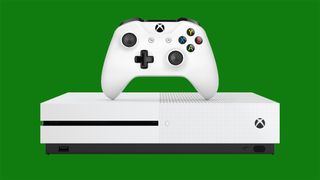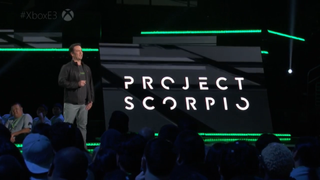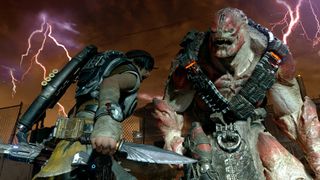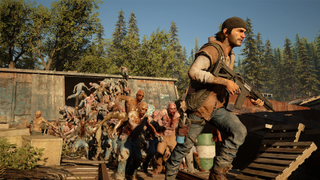Article by Robert Evatt
Every E3 gives players a slew of new games, features and hardware to look forward to. But what do this year’s announcements say about each company? Video games are still a business, and the drive to make money helps shape what kind of products they release. With that in mind, here’s some armchair analysis on what Sony, Microsoft and Nintendo announced at E3 2016 - and what they didn’t.
Virtual reality land rush
We all figured Sony would show something for PSVR, but good lord, the company trotted out some major VR games. The new Resident Evil, Star Wars Battlefront and Final Fantasy 15 will all have VR modes, Rocksteady’s doing something with Batman in VR, and new studio Impulse Gear has Farpoint, an exploration of an alien planet in VR. While it’s true that big, established studios have also pledged support for VR competitors HTC Vive and Oculus Rift, neither of them have demoed anything that high-profile. That’s probably no coincidence.
Lately, Sony’s shown they’re willing to play hardball to land exclusive experiences on the PS4. For instance, there’s Sony’s deal with Capcom to ensure Street Fighter 5 never shows up on Xbox One. Considering how conservative the third party AAA developers have been - just look at all the sequels they announced this year - it’s unusual they would incorporate VR in their big guns when the tech hasn’t even been tested in the market yet. Sony likely provided some major assistance to make these experiences happen. Regardless, it’s clear Sony’s going to push PSVR hard.

Slim down, hype up
Every generation, it’s only a matter of time before the major consoles get a slimming makeover. This time around Microsoft unveiled the Xbox One S, which cuts the size by 40 percent and adds a white finish to boot. There’s a reason we keep getting slim revisions - they sell. The Xbox 360 S helped overall Xbox 360 sales grow by 34 percent in the first nine months of 2010. The same analysis indicated the PS3 Slim juiced that platform’s sales by 66 percent.
Why did we get an Xbox One Slim but no PS4 Slim? Microsoft may be more motivated. Not only is the system selling slower than the PS4, but Microsoft has stopped releasing specific console sales figures to try to hide the gap. On top of that, Microsoft’s latest quarterly report indicated Xbox One hardware revenue fell by 26 percent. By contrast, when the PlayStation 3 fell far short of the Xbox 360 last generation, Sony released a slim revision a year before Microsoft did.The Xbox One S likely won’t take away the sales crown from Sony, but it’ll likely help Microsoft’s bottom line.

Coo-coo for 4K
At any other E3, one console revision per company would be enough. But this time, we got word of a more powerful version of the Xbox One called Scorpio. Before E3, Sony confirmed a similar PS4 upgrade called Neo. We still aren’t entirely sure what they’ll be when they hit next year, giggling about FLOPS and “the best pixels” aside. Based on how Sony and Microsoft presented them, the main selling point may be 4K resolution. Sure, it’s cutting-edge tech, but it’s a more subtle, PC-style upgrade than what we’ve gotten in the past.
It could be both Sony and Microsoft are doing this because what we’ve previously considered to be a new generation of consoles - with new programming architectures, new operating systems and games can’t run on the old consoles - might not come for a long time, if ever. It’s taking more and more processing power to get smaller and smaller visual upgrades a general audience can notice, plus new services are patched in all the time. There’s no need for a complete overhaul in sight. Meanwhile, both giants need to keep selling new machines, though the potential audience isn’t infinite. Imagine If the Xbox One and PS4 were out ten years with no successor in sight. Who would buy them that hadn’t already?
Enter 4K. It’s a hyped and noticeable upgrade depending on the size of your TV, strong bait for hardware buffs and easier to implement than adding yet more polygons. Sony and Microsoft are hoping current owners will re-buy the systems for the stronger resolutions and keep console sales flowing. Of course, the big question is just how tempting 4K will be to current owners - and if there are any other tricks hidden in the new consoles.

One for the PC
Beyond the new hardware, the most interesting news from Microsoft’s presentation was Xbox Play Anywhere, which combines features on Xbox One and Windows 10. Game saves, achievements, multiplayer and even ownership of participating games will be carried over. It sounds like a handy feature. It’s also what seems like the 47th attempt by Microsoft to show they’re serious about PC games. Remember the hype about the early Halo games on PC? Or Games for Windows Live?
If XPA really is as effortless as it sounds, this could be the PC initiative that sticks. But even if Microsoft customers benefit, the real beneficiary would be Windows 10 itself. Even though Microsoft’s allowed free upgrades to Windows 10, as well as increasingly aggressive reminders to upgrade, just 17.3 percent of all computers run Windows 10, according to Netmarketshare. Even with all the reminders, 48.57 percent of all computers still run Windows 7. That’s some dedicated foot-dragging. Since Microsoft benefits from a number of services unique to Windows 10, including data-tracking, they’re motivated to get the operating system on as many machines as possible. XPA’s a strong selling point for Xbox One owners, but it’s also a tempting carrot for Windows 10 upgrades.

Nintendo’s doing… what, exactly?
Besides stalling for time. Granted, the new Legend of Zelda: Breath of the Wild looks amazing, but the complete absence of NX seems more than a little strange. The Wii U is selling terribly, and it’s looking like the system won’t have any big sellers for the holidays. Why leave the crucial buying season wide open?
Because Nintendo’s the rare company that frequently delays things outside of the big selling months if they result in stronger products. One big example is Smash Bros. Brawl, which missed Christmas by a month in order to iron out the online code. There’s also Star Fox Zero, which was originally the tentpole for last Christmas. Though whether that delay made it into a good game is up for debate.
Of course, the fact that the Neo and Scorpio revisions won’t arrive until 2017 lessens the release pressure a bit. But there’s another reason the NX won’t arrive until spring at the earliest - that would put NX out of Nintendo’s current fiscal year. Though it seems odd to most of us, companies enduring bad years will often cut their losses and push their money makers to the next flip of the financial calendar, which in Nintendo’s case is in the end of March. (The new fiscal year was also cited as a factor in the closure of Lionhead - even though Fable Legends was nearly ready, Microsoft reportedly wanted a money-loser off the books.) Sure, this means Nintendo’s dry spell will drag on a few more months, but then NX will load the next fiscal year with much bigger profits that will impress the stockholders. Or at least that’s the theory.

Oh right, games!
And then there’s the real meat of E3 - what we’ll actually get to play. Microsoft and Sony each showed a diverse array of games during their conferences, and they sparked a combination of excitement and “mehs” from the digital peanut gallery. But even here, what each company chose to showcase says a lot about their strategies.
Microsoft’s press conference wasn’t short on new, impressive game footage. But of the 13 games or expansions that were highlighted, only three made their debut - Forza Horizon 3, Dead Rising 4 and State of Decay 2. If you count games that were officially announced during the E3 leak window, you can add Battlefield 1 and Gwent. Well over half were repeat appearances, which explains the feeling of deja vu.
Though the conference was short on new, it was big on now - all the games except State of Decay 2, Tekken 7 and Halo Wars 2 are scheduled for release this year. In an impressive display of secrecy, the Forza and Dead Rising sequels will be out just a few short months after they were revealed. Naturally delays might happen, as Gwent might not exit closed beta, Sea of Thieves has an ambiguous “2016” date and surprise delays could hit any of them. Still, Microsoft went out of their way to at least promise experiences that are close at hand.

Sony’s conference had the opposite theme. Of its 15 highlight games, seven made their debut - God of War, Days Gone, Resident Evil 7, Farpoint, the Crash Bandicoot trilogy remaster, Death Stranding and Spider-Man. Arguably, you could also include the VR segments revealed to be in Batman, Star Wars Battlefront and Final Fantasy 15 as new reveals. Doing that leaves us with just five games that were previously announced.
That comes at the expense of release dates. Besides the games with VR components with the possible exception of Farpoint, none of the new announcements are arriving this year, or even has a date set. Even the previously-announced Horizon: Zero Dawn and Detroit: Become Human will sit out 2016. That leaves only six games you’ll be able to play this year, though by some miracle that includes the eternally-delayed Last Guardian.
Clearly, Microsoft’s betting that it’s better to stick to the short term even if that means few surprises, while Sony wants to make an impression now and hope you remember possibly years later. Though there’s other things to notice through their highlight choices. In Microsoft’s slate, all but ReCore, Sea of Thieves and We Happy Few are based on existing games or game worlds. Sony had six original properties - Days Gone, Death Stranding, Last Guardian, Farpoint, Horizon: Zero Dawn and Detroit: Become Human. In fact, all of Sony’s internally-developed games save God of War are original properties, while all of Microsoft’s first-party games are sequels except for Sea of Thieves. For the most part, Sony’s taking more risks with their games, while Microsoft’s sticking with the familiar.

